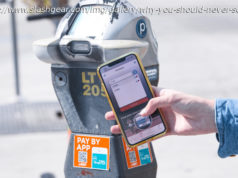Lyft is betting the future of the road centers on sharing autonomous vehicles. It aims to be at the forefront of that technology with a new self-driving..
Lyft is betting the future of the road centers on sharing autonomous vehicles. It aims to be at the forefront of that technology with a new self-driving division and a self-driving system vehicle manufacturers could integrate into their self-driving cars.
The company expects to hire “hundreds” of people for the new division by the end of the year and has just signed a lease for 50,000-square-feet on the first floor of a Palo Alto facility where it plans to build out several labs and open testing spaces. The building Lyft refers to as “Level 5” will be developing its new “ open self-driving platform ” and a combination hardware and software system still in development Lyft hopes auto manufacturers will use to bring autonomous cars to its ride-hailing network.
The plan is somewhat similar to one Uber announced earlier. Lyft’s larger rival uses Volvo’s XC90 to test its self-driving tech on the roads. Uber announced earlier this year it was also partnering with Daimler to operate self-driving cars on it’s network.
In Lyft’s corner, there’s GM, Waymo, JLR and a recently announced self-driving pilot program with the Boston-based autonomous car tech startup Nutonomy.
Lyft’s chief strategy officer Raj Kapoor wouldn’ t comment on comparisons between the two but did say Lyft had the means to attract top talent, a list of trusted partners and critical data needed to build out the system.
A lot of what will come out of this system seems TBD for now. Lyft will still need to hire that top talent, build out its engineering team and work out how to share data with each car manufacturer it partners with.
There may also be some regulatory issues. Comma.ai canceled sales of its own self-driving kit, which allowed certain cars to gain autopilot-like highway driving assistance abilities, after a warning letter from the National Highway and Travel Safety Administration (NHTSA) . The issue stemmed from regulations around selling such a kit. Rather than fighting the NHTSA, Comma.ai later open-sourced the blueprint for the kit, allowing anyone to build it themselves for free.
However, Lyft employs a team to work on regulatory matters and has made in-roads in Washington for other issues in the past.
The other thing to consider, with all this talk of unleashing the unmanned robots to drive us, is the toll it will take on Uber and Lyft’s human drivers. Though Lyft believes the day we replace all the humans is far off, it makes economic sense for ridesharing companies to veer down that path and autonomous vehicles will inevitably take over at some point.
Lyft has said in the past that these drivers could transition into new roles within the company and that the new technology will create new jobs. It’s not clear if all the drivers would get new jobs, how many jobs would be created or how much they’ d be paid. It’s also not clear if they’ d go for a more traditional role rather than the freedom they once enjoyed making their own hours as a driver.
But there could be an option B – drivers converting their cars with Lyft’s kits much like Comma.ai and Cruise Automation offer the ability to convert vehicles already on the road. Kapoor told TechCrunch it would be possible to convert cars already on the road and Luc Vincent, Lyft’s new VP of engineering who will head up the new self-driving division also seemed intrigued by the idea when I floated it.
“It’s not something I’ ve heard us talk about but it’s something to think about, ” Vincent said.






